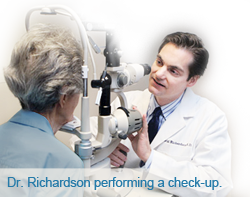Many of us are obsessed with statistics. We may not like the math, but we love “stats.” Whether it be batting averages, stock prices, or our own personal performance values. With regard to surgeries, stats are also important – which is why results are published in peer-review journals.

It is rare, however, to find out the “stats” on a particular surgeon. This is obviously a problem for patients considering a surgical treatment. Just because the results of a national or international study are impressive, does not mean that an individual surgeon’s success rate will be similarly good. Indeed, with a technically challenging surgery such as Canaloplasty, it would be a fair assumption that the individual surgeon’s success rate would be lower than that seen with academic surgeons who publish in clinical journals.
Canaloplasty Surgery Statistics by Ophthalmologists
What is a patient to do? You could ask your what his or her results were, but most ophthalmologists do not keep detailed “stats” of their own surgeries (there’s simply too much administrative work for the average physician to keep up with to justify adding yet another item to the list). Yet, from the patient’s perspective, this is very important information. After knowing what the “stats” are for a procedure, it is critical to know whether those “stats” correspond to your individual surgeon.
For that reason I have tracked my Canaloplasty results and published them here for everyone to see. I will do my best to update them as my schedule allows (the date of the latest update will be displayed on this page). In order to compare apples to apples, the following is worth mentioning:
-
The peer-reviewed literature publishes results at set intervals from surgery (1 year, 2 years, 3 years). Because I am publishing a “running” total, my “stats” are based on the “IOP to date,” – of all of my Canaloplasty patients who are at least one month out from surgery, what is their IOP as of their most recent visit.
-
By including patients who are only one month out from surgery, my results are biased against success (meaning that I would not expect my results to be as good as the published results at one year). This is because IOP often transiently rises between 3-5 weeks out from Canaloplasty. By three months out from surgery the IOP generally stabilizes. Why, then, do I include such early measurements? Because I want to provide the most realistic, raw, real-world results for my potential future patients to see. Just as car buyers are more interested in real-world miles per gallon (rather than the inflated MPG printed on the window sticker), it is important to know the “real world” results of an individual surgeon prior to choosing him or her as your surgeon.
Please note that what I am doing here is considered very unusual (outside of an “academic” practice) and that most private practice glaucoma surgeons will probably not have such stats readily available. I would still recommend asking about his or her personal results and how many canaloplasty surgeries s/he has done. Just don’t expect this kind of detail from most surgeons.
Dr. David Richardson’s Canaloplasty Results
(results as of 1/25/12)
| CANALOPLASTY AVERAGES | ||
| Average Preop IOP | 22.0 | Percent reduction |
| Average current IOP | 12.9 | 42% |
| Average number of meds preop | 1.6 | Percent reduction |
| Average number of meds postop | 0.4 |
73% |
| Average number of drops preop | 2.7 | Percent reduction |
| Average number of drops postop | 0.5 | 80% |
| PHACOCANALOPLASTY | ||
| Average Preop IOP | 17.4 | Percent reduction |
| Average current IOP | 11.6 | 33% |
| Average number of meds preop |
1.4 | Percent reduction |
| Average number of meds postop |
0.2 | 89% |
| Average number of drops preop | 2.2 | Percent reduction |
| Average number of drops postop | 0.3 | 87% |


